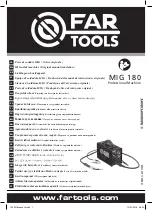
www.miinet.com
Moore Industries-International, Inc.
- 55 -
User’s Manual
225-748-01L
February 2017
Alarms
The STA has one relay which is a Fault alarm and two user-configurable Trip alarms. The Fault
alarm has limited configuration with respect to input faults only. All diagnostic faults will be latched
and must be reset by cycling power to the unit. Input faults can be configured to be latched/
unlatched and can also be configured to be reset by the Manual Reset (MR) feature in addition to
front panel reset.
Note:
For STA units with firmware versions 1.5 and earlier, the fault alarm has no configuration
options, is always latched and cannot be reset by MR.
For more information about trip points, damping, etc., please reference the Alarm Terminology in
Section 1 of this manual.
Trip Point –
Set this Point to have STA unit notify you if your process input drops below, or
exceeds your trip point setting depending on Alarm Mode select by user.
Dead Band–
The Dead Band is the range within which an alarm relay remains in an alarm
condition even after the monitored process variable input has returned to a safe level, at or below/
above the trip point setting
.
Delay -
When your unit is in an alarm condition, the delay is the amount of time you set to elapse
before a relay trips. This can be set in increments of 1 second from 0-120 seconds.
Note:
Firmware versions 1.1.2 and earlier permit 0-60 seconds time delay only. If a delay value
is entered greater than 60, the delay will not operate correctly. (The firmware revision of the unit is
displayed at power up and in the STA Device Info window of the PC Configuration software).
Figure 5.4.
Alarms Tab
Programmable Current/Voltage Safety Trip Alarm
STA
HLPRG
SEC
TION 5
















































